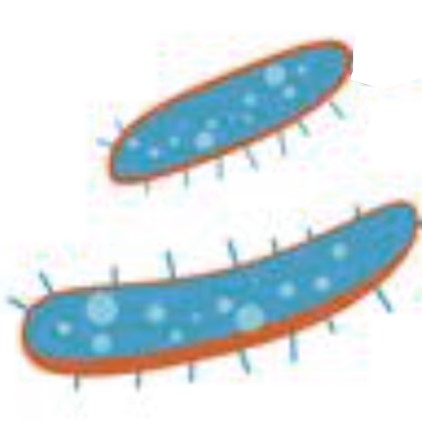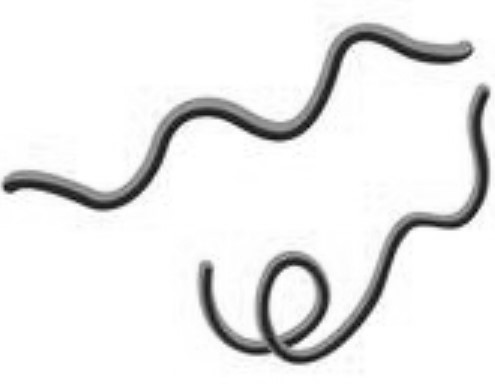Introduction
What is the NCBI?

We are a center within the NLM responsible for
creation, curation and maintenance of biomedical and scientific databases and related tools…
We receive, create, archive & make available biomedical information,
as well as perform computational biology & IT systems research…..
but we really aspire to help make sense of the information!
NCBI’s Information Hubs & Key Databases

Some other cool NCBI tools: Entrez (keyword search tool), BLAST (sequence search tool), Genome Data Viewer, PGAP (bacteria genome annotation tools), RAPT (bacteria genome assembly and annotation pipeline), and more....
What are pathogens?
From Biology Online:
Word origin: from Greek pathos, suffering/emotion, and gene, to give birth to.
"An agent causing disease or illness to its host, such as an organism or infectious particle capable of producing a disease in another organism."
"Pathogens are mostly microscopic, such as bacteria, viruses, protozoa, and fungi...."
Word origin: from Greek pathos, suffering/emotion, and gene, to give birth to.
"An agent causing disease or illness to its host, such as an organism or infectious particle capable of producing a disease in another organism."
"Pathogens are mostly microscopic, such as bacteria, viruses, protozoa, and fungi...."
Examples of Pathogens
Bacteria -(typically range between 1 and 5 micrometers in length
 Prokaryotic pathogenic bacteria contribute to globally important diseases, such as tuberculosis, bacterial pneumonia (Streptococcus and Pseudomonas), and foodborne illnesses, which can be caused by bacteria such as Shigella, Campylobacter, and Salmonella. Pathogenic bacteria also cause infections such as tetanus, typhoid fever, diphtheria, syphilis, and Hansen's disease.
Prokaryotic pathogenic bacteria contribute to globally important diseases, such as tuberculosis, bacterial pneumonia (Streptococcus and Pseudomonas), and foodborne illnesses, which can be caused by bacteria such as Shigella, Campylobacter, and Salmonella. Pathogenic bacteria also cause infections such as tetanus, typhoid fever, diphtheria, syphilis, and Hansen's disease.
Virus - typically range between 20 and 300 nanometers in length
 Pathogenic viruses are mainly those of the families of Adenoviridae, Picornaviridae, Herpesviridae, Hepadnaviridae, Flaviviridae, Retroviridae, Orthomyxoviridae, Paramyxoviridae, Papovaviridae, Polyomavirus, Rhabdoviridae, and Togaviridae.
Pathogenic viruses are mainly those of the families of Adenoviridae, Picornaviridae, Herpesviridae, Hepadnaviridae, Flaviviridae, Retroviridae, Orthomyxoviridae, Paramyxoviridae, Papovaviridae, Polyomavirus, Rhabdoviridae, and Togaviridae.
Protozoa - generally between 10 and 100 micrometers in length
 Eukaryotic and unicellular in organization. Examples include Entamoeba histolytica, Plasmodium falciparum (malaria), Toxoplasma gondii (toxoplasmosis), Leishmania species (leishmaniases), Trypanosoma brucei (African sleeping sickness), Trypanosoma cruzi (Chagas disease) and Giardia intestinalis (giardiasis).
Eukaryotic and unicellular in organization. Examples include Entamoeba histolytica, Plasmodium falciparum (malaria), Toxoplasma gondii (toxoplasmosis), Leishmania species (leishmaniases), Trypanosoma brucei (African sleeping sickness), Trypanosoma cruzi (Chagas disease) and Giardia intestinalis (giardiasis).
Fungi - spores typically range between 1 and 10 micrometers in length, hyphae are 5 to 50 micrometers, fungal communities can grow much longer
 Eukaryotic and unicellular or clonal in organization. Life-threatening fungal infections in humans most often occur in immunocompromised patients or vulnerable people with a weakened immune system, although fungi are common problems in the immunocompetent population as the causative agents of skin, nail, or yeast infections. Most clinical fungicides belong to the azole group.
Eukaryotic and unicellular or clonal in organization. Life-threatening fungal infections in humans most often occur in immunocompromised patients or vulnerable people with a weakened immune system, although fungi are common problems in the immunocompetent population as the causative agents of skin, nail, or yeast infections. Most clinical fungicides belong to the azole group.
Helminth - typically range between 3 and 200 micrometers in length.
 Eukaryotic worms that are generally environmentally-transmitted and often infect the GI tract or blood vessels (taenia, tapeworm, Cestodes ; schistosoma, flukes, Trematodes ; ascaris/hookworm, roundworm, Nematode)
Eukaryotic worms that are generally environmentally-transmitted and often infect the GI tract or blood vessels (taenia, tapeworm, Cestodes ; schistosoma, flukes, Trematodes ; ascaris/hookworm, roundworm, Nematode)
 Prokaryotic pathogenic bacteria contribute to globally important diseases, such as tuberculosis, bacterial pneumonia (Streptococcus and Pseudomonas), and foodborne illnesses, which can be caused by bacteria such as Shigella, Campylobacter, and Salmonella. Pathogenic bacteria also cause infections such as tetanus, typhoid fever, diphtheria, syphilis, and Hansen's disease.
Prokaryotic pathogenic bacteria contribute to globally important diseases, such as tuberculosis, bacterial pneumonia (Streptococcus and Pseudomonas), and foodborne illnesses, which can be caused by bacteria such as Shigella, Campylobacter, and Salmonella. Pathogenic bacteria also cause infections such as tetanus, typhoid fever, diphtheria, syphilis, and Hansen's disease. Virus - typically range between 20 and 300 nanometers in length
 Pathogenic viruses are mainly those of the families of Adenoviridae, Picornaviridae, Herpesviridae, Hepadnaviridae, Flaviviridae, Retroviridae, Orthomyxoviridae, Paramyxoviridae, Papovaviridae, Polyomavirus, Rhabdoviridae, and Togaviridae.
Pathogenic viruses are mainly those of the families of Adenoviridae, Picornaviridae, Herpesviridae, Hepadnaviridae, Flaviviridae, Retroviridae, Orthomyxoviridae, Paramyxoviridae, Papovaviridae, Polyomavirus, Rhabdoviridae, and Togaviridae. Protozoa - generally between 10 and 100 micrometers in length
 Eukaryotic and unicellular in organization. Examples include Entamoeba histolytica, Plasmodium falciparum (malaria), Toxoplasma gondii (toxoplasmosis), Leishmania species (leishmaniases), Trypanosoma brucei (African sleeping sickness), Trypanosoma cruzi (Chagas disease) and Giardia intestinalis (giardiasis).
Eukaryotic and unicellular in organization. Examples include Entamoeba histolytica, Plasmodium falciparum (malaria), Toxoplasma gondii (toxoplasmosis), Leishmania species (leishmaniases), Trypanosoma brucei (African sleeping sickness), Trypanosoma cruzi (Chagas disease) and Giardia intestinalis (giardiasis).Fungi - spores typically range between 1 and 10 micrometers in length, hyphae are 5 to 50 micrometers, fungal communities can grow much longer
 Eukaryotic and unicellular or clonal in organization. Life-threatening fungal infections in humans most often occur in immunocompromised patients or vulnerable people with a weakened immune system, although fungi are common problems in the immunocompetent population as the causative agents of skin, nail, or yeast infections. Most clinical fungicides belong to the azole group.
Eukaryotic and unicellular or clonal in organization. Life-threatening fungal infections in humans most often occur in immunocompromised patients or vulnerable people with a weakened immune system, although fungi are common problems in the immunocompetent population as the causative agents of skin, nail, or yeast infections. Most clinical fungicides belong to the azole group.Helminth - typically range between 3 and 200 micrometers in length.
In today's workshop...
Today's workshop was designed as one of a group of introductory workshops for educators and students, but it may also be helpful for researchers interested in starting to learn how to find helpful information.
Based on your choice of 3 offered pathogen-related case studies, you will perform guided, hands-on exercises using NCBI resources to learn how to:
Based on your choice of 3 offered pathogen-related case studies, you will perform guided, hands-on exercises using NCBI resources to learn how to:
- use a piece of DNA sequence to identify the pathogen using BLAST
- find a reference genome for the pathogen and learn how to download a reference genomic dataset
- create and download a custom genomic dataset for organisms related to the pathogen
- identify other sources of data for the pathogen and learn where to interesting experimental datasets which could be used for further exploration
Please note that we will not go into:
-
-
how to use some great, but complex specialty resources
-
use of APIs with scripting or command-line access to NCBI resources
-
or advanced analysis of data
-
Some resources for more advanced work are provided at the end of each section, for those of you who might like to take what you'd learned in this workshop to the next step.
Last Reviewed: February 28, 2024

